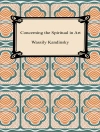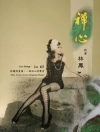Gustave Courbet (1819–1877) is considered to have introduced the practice of socially engaged painting, and he is viewed as one of the most important representatives of Realism. The direct and honest depictions of this artistic tendency—which ascribed to representing things as they are—challenged the idealized subject matter of academic painting and scandalized the Parisian society of the nineteenth century. Courbet became a leading figure of the rebellious artistic bohème and cultivated a lively exchange with the predominant poets and artists of his era. However, he was not merely an anti-establishment provocateur; he significantly revolutionized landscape painting. With seven essays this volume offers an introduction to selected aspects of the artist’s life and work. His paintings will also inspire even those who may not be well versed in the world of art. Courbet’s incredibly rich oeuvre and his exciting biography make him an artist worth discovering, again and again. (German edition ISBN 978-3-7757-3867-5)
In conjunction with this exhibition a catalogue (German edition ISBN 978-3-7757-3862-0, English edition ISBN 978-3-7757-3863-7) and a printed volme (German edition ISBN 978-3-7757-3867-5, English edition ISBN 978-3-7757-3878-1).
Exhibition: Fondation Beyeler, Riehen/Basel 7.9.2014–18.1.2015
Tabella dei contenuti
Prologue The Hammock
Ornans – Flagey
Industrialization in the Countryside Remarks on The Stonebreakers and The Wheat Sifters
Eugène Delacroix Sees The Painter’s Studio
With Knife and Thumb
Origine du monde – Origine de la peinture
Epilogue
Notes
Biography
Recommended Reading and Viewing
Literature
Acknowledgments
Photo credits












